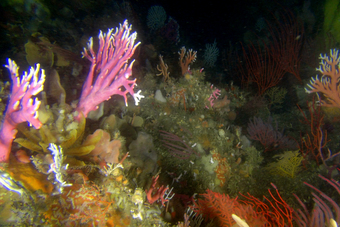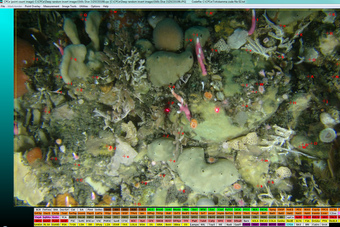Publications:
Heyns et al. 2016
Effective marine resource management requires knowledge of the distribution of critical habitats that support resource populations and the processes that maintain them. Reefs that host diverse macrobenthic communities are important habitats for fish. However, detailed information on macrobenthic communities is rarely available and is usually limited to SCUBA diving depths. To establish depth-related distribution patterns and drivers that structure reef communities, the macrobenthos situated in a warm-temperate marine protected area (MPA; 34°01′24S; 23°54′09E) was sampled between 2009 and 2012. Comparison of shallow (11–25 m) and deep (45–75 m) sites revealed significantly different communities, sharing only 27.9 % of species. LINKTREE analysis revealed a changeover of species along the depth gradient, resulting in four significantly different assemblage clusters, each associated with particular environmental variables. High light intensity supported benthic algae at shallow depths, and as light availability decreased with depth, algal cover diminished and was eventually absent from the deep reef. Upright growth forms and settled particulate matter were positively related to depth and dominated the deep reef. Reduced wave action and currents on the deep reef can explain the increased settling of suspended particles. Under such conditions, clogging of feeding parts of the encrusting species is expected, and upright growth would be favoured. Considering that most MPAs are restricted to shallow coastal habitats and that macrobenthic communities change significantly with depth, it is probable that many unique deep reef habitats are currently afforded no protection.
11- 75 m
Mesophotic “mentions”
42 x (total of 6765 words)
Classification
* Presents original data
* Focused on 'mesophotic' depth range
* Focused on 'temperate mesophotic ecosystem'
Fields
Community structure
Biodiversity
Management and Conservation
Focusgroups
Overall benthic (groups)
Locations
South Africa
Platforms
Remotely Operated Vehicle (ROV)
SCUBA (open-circuit or unspecified)



